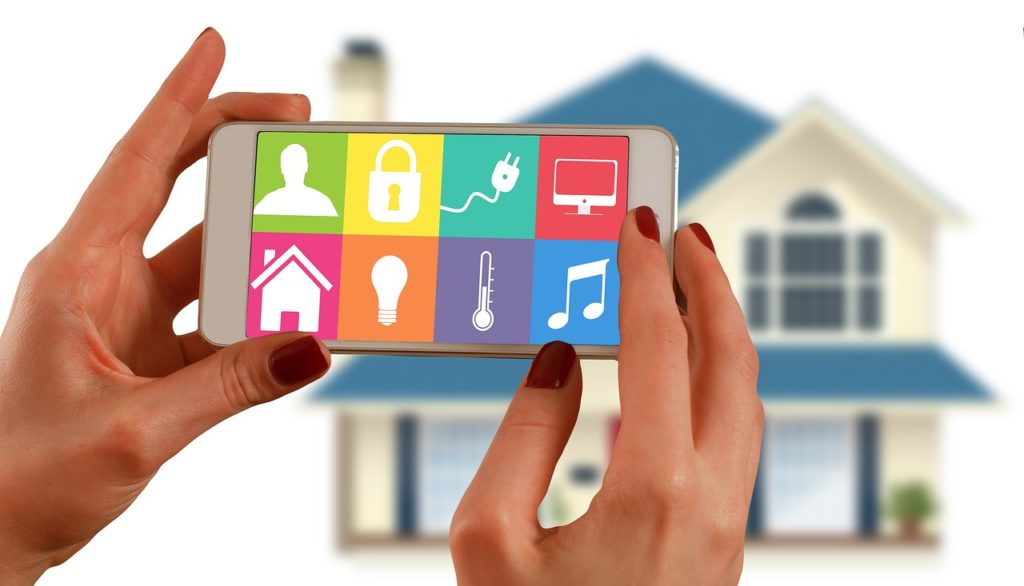
Aging in place with smart home technology
Aging in place, the concept of growing older within the comfort of one’s familiar home, is increasingly sought after as the U.S. population ages. Rather than moving to a senior living community or long-term care facility, an growing number of older adults are choosing to age in place. AARP estimates the number of people ages 65 and older who choose to age in place will increase from 34 million today to 48 million by the year 2050.
For some, a wave of innovative, assistive technologies is making aging in place even more desirable. Assistive technologies can include any device that accommodates a disability to complete a task. In a previous blog, we explored the use of assistive robots to promote healthy behaviors and communication. Today, we will expand on an evolving field within assistive tech, called smart home technology, and how it can support aging in place.
Smart home technology
Welcome to the future of home living, where the touch of a smartphone or tablet is all it takes to manage your household devices. Many smart home products can provide up-to-date information that can typically be viewed on the same app. For example, a schedule to turn on a smart home sprinkler system can be adjusted remotely using an app. The same app may also suggest schedule changes based on weather patterns or alert the homeowner if there is something preventing the sprinkler system from working properly. Below are some smart home products that can support aging in place with food preparation and medication management.
In the kitchen
Many adults experience a decreased ability to taste and smell in older age, which limits their ability to prepare meals safely and independently. Impaired taste and smell may lead to consuming spoiled or undercooked ingredients, resulting in gastrointestinal illnesses. Some smart home ovens help prevent the consumption of raw meat by including a meat thermometer. When the meat has reached a safe temperature for eating, the oven’s app can notify the user.
In addition to a meat thermometer, some smart ovens add an extra layer of safety via stove sensors. A stove sensor will turn off the stove if it does not detect bodily movement in front of it after five minutes. If an older adult is planning on leaving the stove for more than a few minutes, they can use an app that is connected to the stove sensor to tell it when they plan on returning. Food preparation is one important task that smart home technology can assist with, but it can also help with managing medications.
Medication management
Some older adults, particularly those living with mild cognitive impairment or early stages of dementia, may have difficulty self-administering the right medication at the correct time at home. Popular medication management strategies include using a pill organizer and following a consistent daily routine. Some older adults rely on a care partner to safely take their medications.
An automated medication dispenser utilizes smart home technology to administer medication at the right time. The dispenser machine audibly notifies the older adult with a loud sound, while an app wirelessly connected to the dispenser can also provide notifications that a medicine has been dispensed. As an older adult removes medication from the dispenser’s tray, the machine records the exact time of medication intake in the app for future reference. Family members and care providers can also use the app on their phones to ensure the medication dispenser is being used properly. The smart home medication dispenser may also alert the older adult’s pharmacy to mail a refill if a medication is running low. Although the dispenser can assist with managing multiple medications, an older adult may need some assistance with setting up the dispenser and refilling it.
Concerns and hesitations
Although technology can support some aspects of aging in place, some are hesitant to integrate smart home technology in their homes.
In a study conducted by the University of Bristol, researchers installed a series of motion sensors that can contact emergency services and family members if a fall is detected. Older adult participants expressed a need for more instruction on using the device. The participants also wanted to know how much information the device needed to detect a fall and the likelihood of a false positive response. Participants also disclosed that gradual adoption of smart home technology makes them more comfortable to use it, compared to having many devices installed in their homes in a short amount of time.
Smart home technology is a new and developing field with unique products being introduced to the public frequently. Consumers should research if certain smart home devices are suitable for their needs before they tap into this advancing field.
tl;dr
- Aging in place is when an older adult opts to live in their home through late adulthood instead of moving to a senior living community or long-term care facility.
- Needing assistance with instrumental activities of daily living prevent many adults from aging in place.
- Smart home technology utilizes a smartphone or tablet to control devices installed in the home, which can support aging in place.
- Smart home ovens and stove sensors can aid in food preparation and safe food consumption for older adults.
- Medication management devices can assist older adults to take the right medication at the right time.
- Hesitancies to integrate smart home technology include needing more instruction on how to use the devices and how the device gathers data.
ABOUT THE AUTHOR
Rachel Washburn is a senior majoring in health and exercise science with a minor in gerontology at CSU. She is currently working as a student ambassador at CSU’s Center for Healthy Aging.





